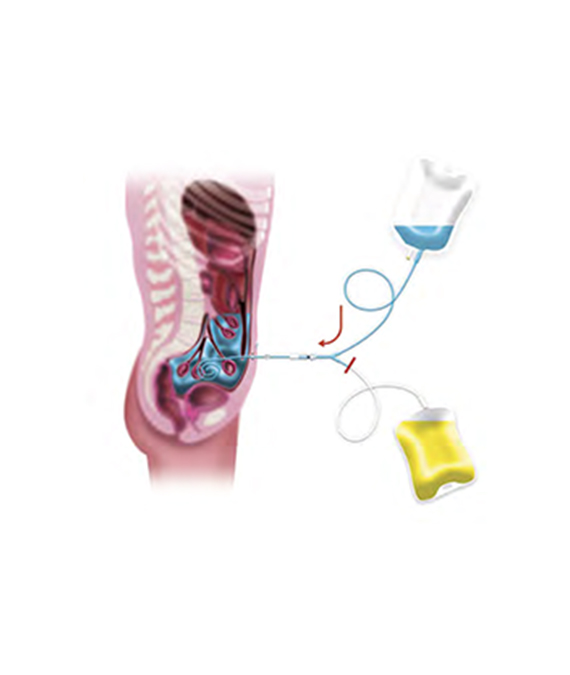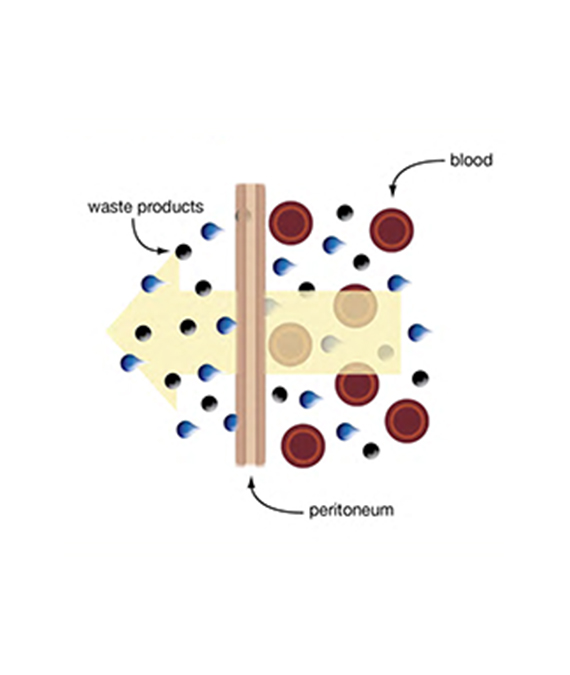What is peritoneal dialysis (PD)?
What is PD and how does it work?

PD uses a special solution (dialysate) and your own peritoneal membrane—the lining of your abdomen—as the filter to help clean the blood and remove excess fluids. This method is similar to regular kidney function insofar as the blood cleansing and fluid control is continuous inside your body.
A PD catheter is surgically placed in the abdomen and is used to access the peritoneal cavity, and therefore peritoneal membrane, to allow for dialysis.
A special solution (dialysate, or dialysis solution) is infused into the abdomen through the PD catheter, and this brings it into contact with the peritoneal membrane. The dialysis solution then encourages waste from the blood as well as excess body fluids to pass through the peritoneal membrane, which acts as a natural filter.

Waste products and extra water in the blood are pulled into the solution by means of diffusion and osmosis. Once this stage is complete, the used dialysis solution is then drained out of the abdomen through the PD catheter into a collection bag or other means of disposal. This process is called an exchange.
The small particles of waste float out of the blood, through the tiny holes in the peritoneum—the membrane lining the walls of the abdominal and pelvic cavities—and into the dialysis solution.
The waste particles float from the blood side, where it is more crowded (in a higher concentration), to the solution side, which is less crowded (in a lower concentration).
The dialysis solutions that are used do several things: they help your body remove extra fluid, help with nutrition, replace some of the lost protein, and balance blood acid levels. Your doctor will determine your personal dialysis prescription (the right type of solution and number of exchanges) to meet your needs.

PD is done at home so that you have more flexibility to arrange your daily activities and schedule. You can even perform PD at work or on the road. This may allow you more time to enjoy your favorite things, like traveling, school, work, hobbies, sports, visiting with friends, and a full family life. You, your family members, or your caregiver carry out the procedures for PD. Your healthcare team will train you and/or your caregiver on how to complete your treatments.
Learn more about PD and Baxter

Preparing and Performing PD treatments
Familiarize yourself with the daily process: from preparation, to handwashing, to connection and disconnection.

Living well on PD
Gain more control over your life with information on managing peritoneal dialysis, including details on fluid management, exit-site care, and home delivery services.

